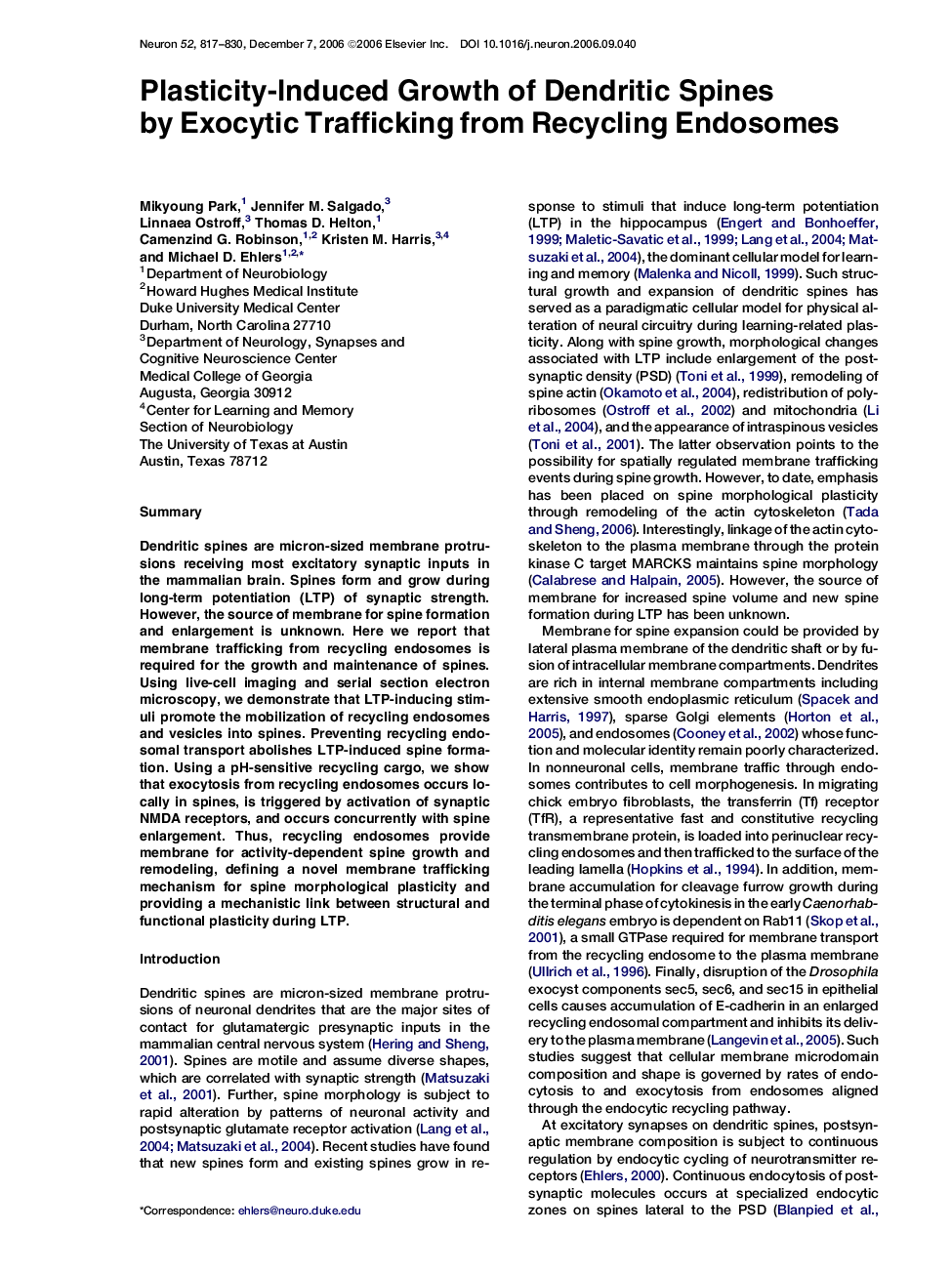| Article ID | Journal | Published Year | Pages | File Type |
|---|---|---|---|---|
| 4323254 | Neuron | 2006 | 14 Pages |
SummaryDendritic spines are micron-sized membrane protrusions receiving most excitatory synaptic inputs in the mammalian brain. Spines form and grow during long-term potentiation (LTP) of synaptic strength. However, the source of membrane for spine formation and enlargement is unknown. Here we report that membrane trafficking from recycling endosomes is required for the growth and maintenance of spines. Using live-cell imaging and serial section electron microscopy, we demonstrate that LTP-inducing stimuli promote the mobilization of recycling endosomes and vesicles into spines. Preventing recycling endosomal transport abolishes LTP-induced spine formation. Using a pH-sensitive recycling cargo, we show that exocytosis from recycling endosomes occurs locally in spines, is triggered by activation of synaptic NMDA receptors, and occurs concurrently with spine enlargement. Thus, recycling endosomes provide membrane for activity-dependent spine growth and remodeling, defining a novel membrane trafficking mechanism for spine morphological plasticity and providing a mechanistic link between structural and functional plasticity during LTP.
